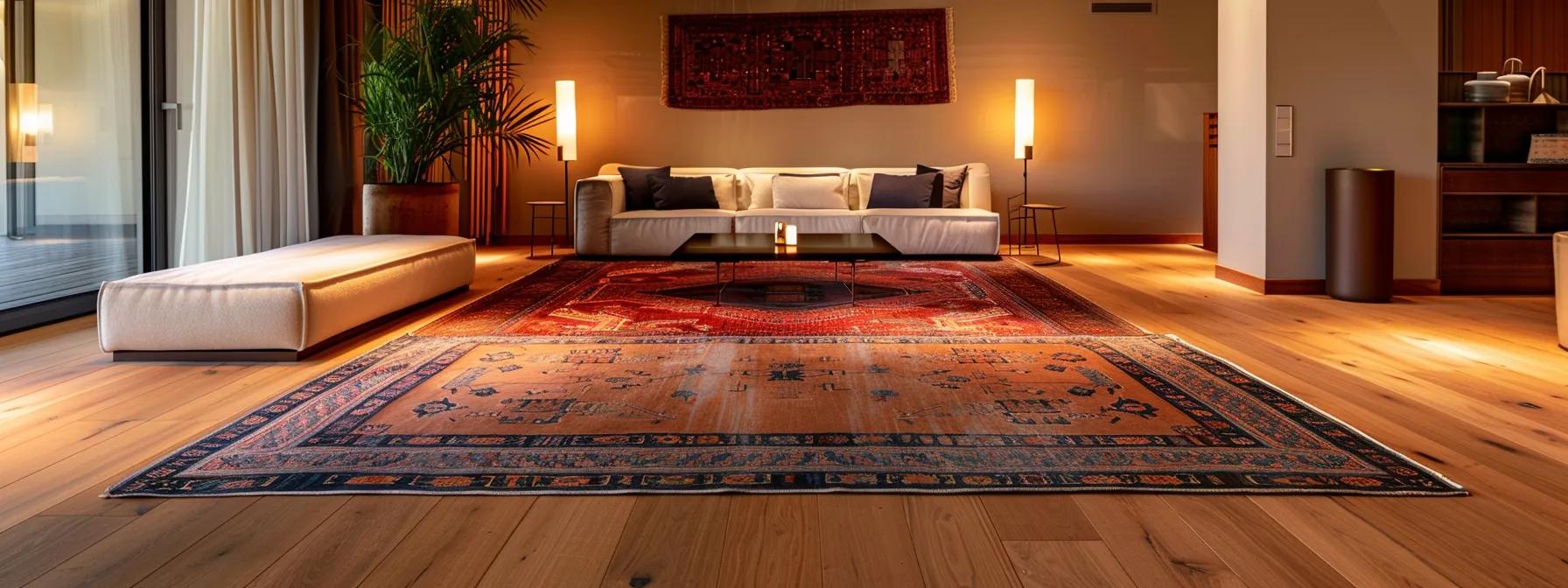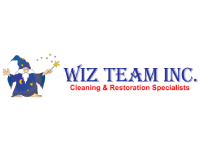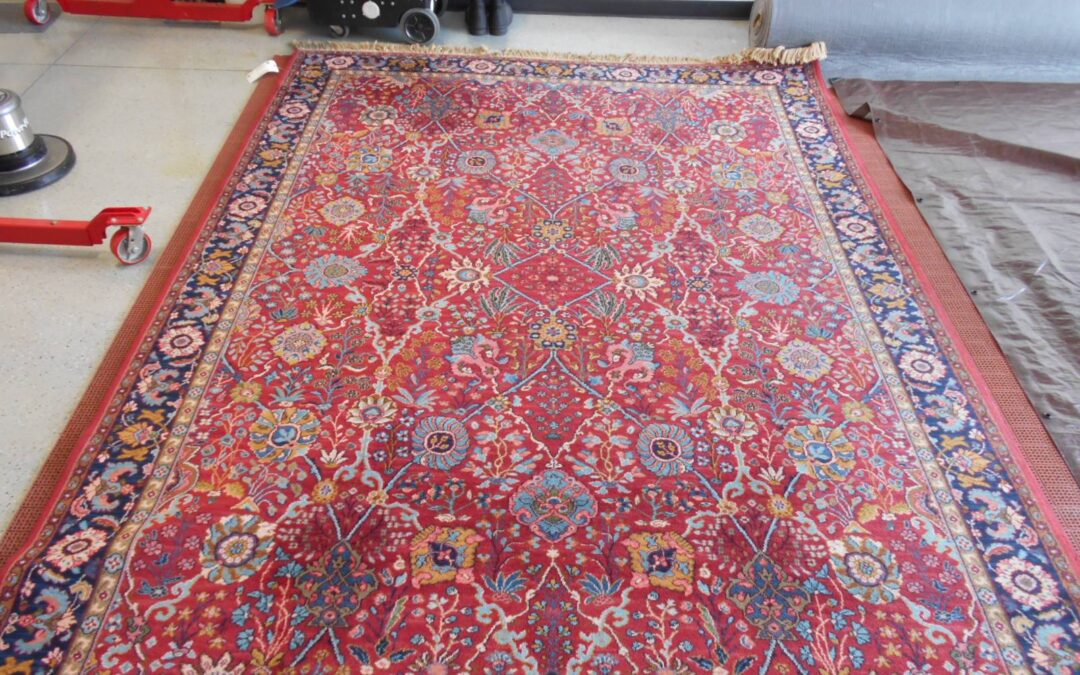In Lake Forest, IL, maintaining the appearance and longevity of area rugs is essential for both residential and commercial spaces. Many locals now prioritize area rug cleaning as a key strategy for preserving these prized textiles. Rug cleaning goes beyond a cosmetic effort; it protects fiber integrity, reduces allergens, and improves indoor air quality. Rugs often accumulate dirt, stains, and debris, and improper or infrequent cleaning can lead to permanent damage. Professional rug cleaning services, including Wiz Team, use advanced techniques tailored to the rug’s composition—including steam cleaning, dry cleaning, and hand washing—to treat fibers from wool to synthetic blends appropriately while preserving texture and color. This article explores effective rug cleaning methods, eco-friendly techniques, the ideal frequency for professional cleaning, and key preparatory steps for protecting high-value rugs, as detailed in our services. By understanding these methods and their benefits, readers can safeguard their investment with expert techniques that maximize durability and aesthetic appeal.
Transitioning into the main discussion, the following sections answer several common queries regarding rug cleaning practices and eco-friendly solutions.
What Are the Most Effective Rug Cleaning Methods?
Understanding various rug cleaning methods is crucial for selecting the best technique for a particular rug type. The main methods include steam cleaning, dry cleaning, and hand washing. Each method has a distinct mechanism and advantages that professionals evaluate before beginning any cleaning process.
How Does Steam Cleaning Work for Different Rug Types?
Steam cleaning uses high-temperature water vapor combined with specialized cleaning solutions to loosen dirt and kill bacteria within rug fibers. This method is effective for durable synthetic fibers and certain natural fibers that tolerate heat and moisture. The process begins with pre-treating stubborn stains, followed by pressurized steam that penetrates the pile. A vacuum extraction system removes the moisture and dirt. For polyester and nylon rugs, steam cleaning can significantly improve soil removal while reducing allergens. Adjusting water temperature and pressure based on the rug’s composition helps prevent fiber shrinkage or color fading.
When Is Dry Cleaning the Best Option for Rugs?
Dry cleaning is ideal when water-based methods might damage the rug, especially with delicate fibers or antique pieces. In this process, powder or solvent-based compounds are applied, agitated with minimal moisture, and then vacuumed off to remove impurities. This method minimizes the risk of shrinkage or dye bleeding and is particularly suited for silk, wool, and vintage carpets. Furthermore, since no drying time is required, dry cleaning is advantageous for businesses or high-traffic areas.
What Are the Benefits of Hand Washing Rugs?
Hand washing is a gentle approach for rugs that require extra care, such as handmade, oriental, or heirloom pieces. Cleaners submerge the rug in lukewarm water with a mild cleaning solution and agitate it by hand to remove dirt and stains. This method minimizes mechanical stress, reducing risks of fraying, color dilution, or structural damage. Thorough rinsing ensures no cleaning residue remains, thus protecting the fibers and preserving the rug’s sentimental or monetary value.
How Do Professional Cleaners Choose the Right Method?
Professional cleaners consider the rug’s material, age, fiber density, stain type, and overall condition. They perform a detailed inspection, sometimes including a spot test, to determine whether the rug can withstand moisture from steam cleaning or if a low-moisture method is needed. Manufacturer recommendations and historical data on similar rug types guide their decision. This careful evaluation ensures that the chosen cleaning method maximizes cleanliness while protecting the rug’s structure and visual appeal.
Why Choose Eco-Friendly Rug Cleaning Techniques?

Eco-friendly rug cleaning techniques are at the forefront of sustainable cleaning services in Lake Forest. These methods minimize harsh chemical use and reduce water consumption while delivering excellent cleaning results. By opting for eco-friendly processes, homeowners reduce indoor pollutants and contribute to a healthier environment—beneficial for those with allergies or respiratory issues.
What Are the Benefits of Using Eco-Friendly Cleaning Products?
Eco-friendly cleaning products are made with biodegradable ingredients that pose minimal risk to human health and the environment. They break down stains and eliminate dirt without leaving harmful residues. These products not only protect rug fibers from chemical deterioration over time but also reduce indoor volatile organic compounds (VOCs), thereby enhancing air quality and lowering allergic reactions. Many eco-friendly formulations are free from phosphates and synthetic fragrances, further reducing risks of microbial resistance and water pollution.
Which Sustainable Practices Do Professional Rug Cleaners Use?
Professional rug cleaners adopt several sustainable practices, such as recycling rinse water, using energy-efficient equipment, and employing low-moisture techniques. They often use cleaning agents certified for low environmental impact and follow strict waste management protocols to responsibly dispose of or repurpose residual waste. Additionally, training staff on green cleaning procedures and researching innovative, environmentally friendly solutions are standard practices. These measures lower the facility’s carbon footprint while meeting high cleaning standards.
How Do Eco-Friendly Methods Compare to Traditional Cleaning?
Eco-friendly methods offer comparable performance to traditional techniques while reducing environmental impacts. Traditional methods often use synthetic chemicals that can build up over time and trigger allergies. In contrast, green cleaning agents break down naturally, lower chemical exposure risks, and usually require less water and energy. Such methods achieve high stain removal efficiency and long-term effectiveness while being safer for indoor air and natural ecosystems.
How Often Should You Professionally Clean Your Rugs?
The frequency of professional rug cleaning depends on factors such as rug type, foot traffic, pet presence, and environmental conditions. Regular cleaning preserves the rug’s appearance and extends its lifespan by removing damaging debris and dirt accumulations. Professionals typically recommend a cleaning cycle of six months to a year, although high-traffic or heavily soiled areas might require more frequent cleaning.
What Factors Affect Rug Cleaning Frequency?
Several factors determine cleaning frequency. High foot traffic or households with pets and children accumulate dirt and allergens more quickly. The rug’s material also matters; intricate handwoven rugs may need less frequent cleaning, while synthetic rugs might require more regular care. Environmental issues like urban pollution, humidity, and seasonal dust levels also play a role. Cleaners combine these factors with personal usage patterns to recommend a customized cleaning schedule that maintains both the rug’s appearance and durability.
How Does Regular Cleaning Extend Rug Lifespan?
Routine cleaning extends a rug’s lifespan by removing abrasive particles that can wear down fibers over time. Dirt, dust, and pet dander act as microscopic abrasives leading to premature aging and color fading. Regular removal of these particles maintains the rug’s structural integrity and vibrancy. Besides improving indoor air quality, routine cleaning prevents fiber degradation caused by biological contaminants, preserving the rug’s original texture and brilliance.
When Is It Time to Schedule a Professional Cleaning?
Professional cleaning should be scheduled when visible stains become persistent, the rug loses its vibrancy, or indoor allergens begin to affect air quality. Signs like a musty odor or a rough texture underfoot indicate significant dust and dirt buildup. For high-traffic areas or where indoor air quality is a concern, a semi-annual cleaning routine is advisable. A professional visual and tactile inspection can determine if immediate cleaning or specialized treatment is necessary.
How Can You Prepare Your Rug for Professional Cleaning?

Proper preparation before professional cleaning is crucial to protect both the rug and your home, ensuring an efficient cleaning process with reduced drying times and minimized damage.
What Should You Do Before Scheduling a Rug Cleaning?
Before scheduling, clear the area around the rug to protect furniture and delicate objects. Vacuum the rug thoroughly to remove loose dirt, allowing the cleaner to focus on embedded stains. Remove any loose items or additional rugs to provide adequate space for professional equipment. It is also wise to document the rug’s condition with photos, particularly if it is valuable or antique, to record any pre-existing damage.
How to Protect Fragile Rugs During Cleaning?
For fragile rugs made of materials like silk or vintage wool, professionals choose low-moisture or hand washing techniques to reduce the risk of fiber weakening. Using protective sheeting during transportation and padded supports during handling helps minimize damage. Custom drying methods, such as controlled air-drying, prevent shrinkage or stretching. Clear communication regarding the rug’s age, origin, and vulnerabilities ensures that the cleaning service adapts its methods accordingly.
What Questions Should You Ask Your Rug Cleaning Service?
When selecting a rug cleaning service, ask key questions to ensure their methods and products suit your rug type. Inquire about the specific cleaning techniques recommended, the eco-friendly products used, and their experience with delicate or antique rugs. Discuss their drying process, turnaround time, and any warranties offered. Additionally, confirm how they handle stains and pet-related issues to ensure your specific needs are met. These questions help establish clear service expectations and build trust in the provider’s expertise.
| Cleaning Method | Suitability | Key Process Detail | Benefit |
|---|---|---|---|
| Steam Cleaning | Synthetic & heat-tolerant fibers | High-temperature steam with vacuum extraction | Deep cleaning with high allergen removal |
| Dry Cleaning | Delicate, antique, or moisture-sensitive rugs | Solvent-based compounds with minimal moisture | Minimizes fiber damage and need for drying |
| Hand Washing | Handmade, oriental, or heirloom rugs | Gentle manual agitation in mild solutions | Preserves delicate fibers and color integrity |
The table above summarizes the key cleaning methods, their suitability for different rug types, and their benefits. Another analysis compares eco-friendly methods to traditional techniques, highlighting sustainability benefits.
| Aspect | Eco-Friendly Methods | Traditional Methods | Comparative Benefit |
|---|---|---|---|
| Chemical Composition | Biodegradable, non-toxic formulations | Synthetic, harsher chemicals | Reduced health risks and environmental impact |
| Water & Energy Use | Optimized for lower consumption | Higher consumption | Lower operational costs and waste |
| Performance | Comparable stain removal and allergen reduction | High cleaning power but potential residue | High efficiency with long-term safety |
| Environmental Impact | Minimal residue and sustainable disposal | Potentially harmful runoff | Safer for indoor air and natural ecosystems |
| Maintenance of Fibers | Gentle on fibers over time | Risk of fiber degradation | Prolongs rug lifespan and appearance |
Final Thoughts: Eco-Friendly and Professional Rug Cleaning Benefits
Professional rug cleaning techniques are vital for maintaining the appearance and structure of rugs, especially in high-use environments such as Lake Forest, IL. Methods like steam cleaning, dry cleaning, and hand washing effectively remove deep-seated dirt and allergens while preserving delicate fibers. Eco-friendly solutions add the benefits of reduced chemical exposure and environmental impact, ensuring that rugs remain beautiful and safe for modern living. Investing in these professional practices not only enhances your indoor aesthetics but also contributes to a healthier, more sustainable home environment.




